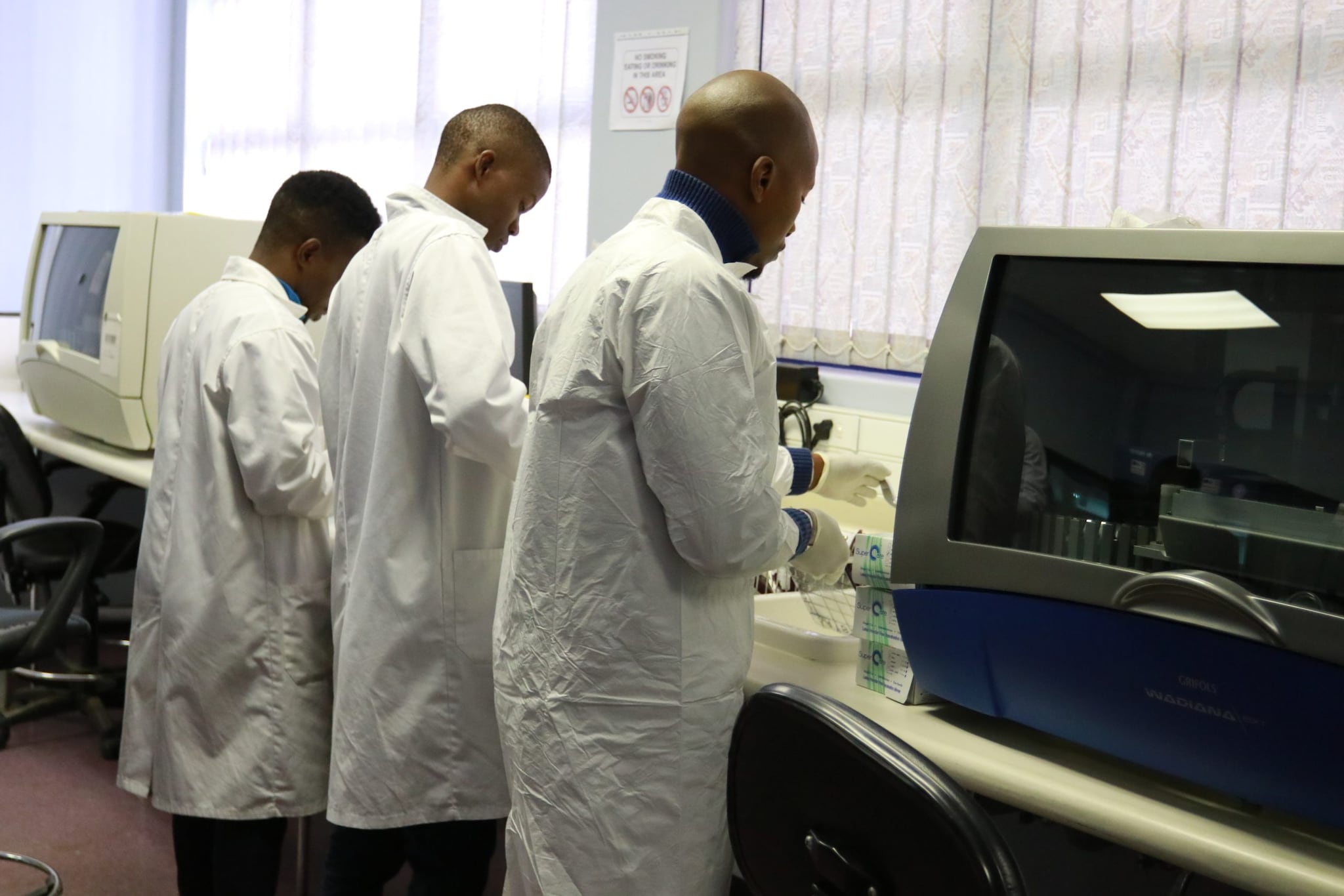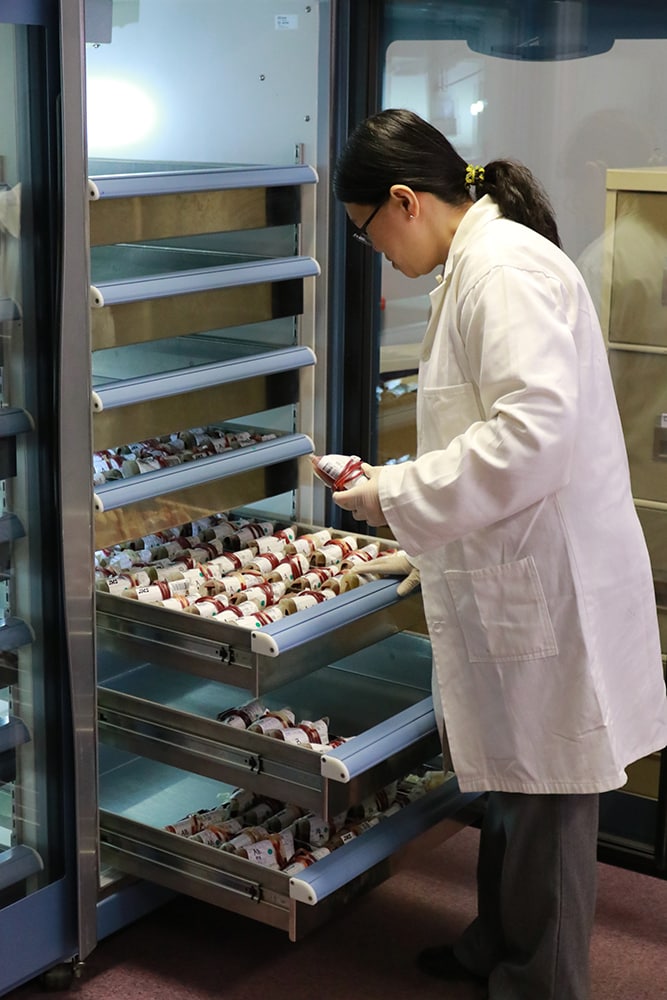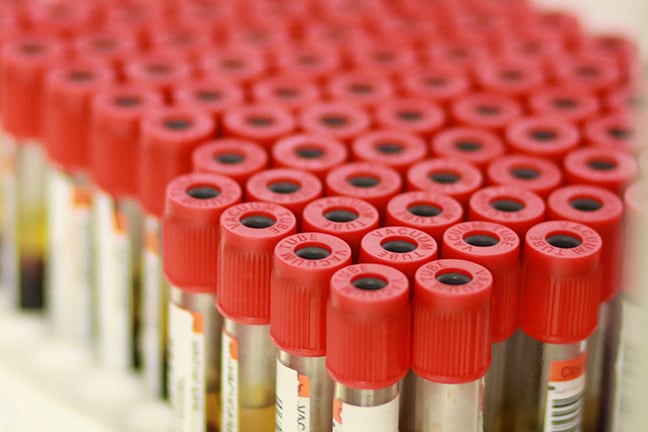At a glance
This story tells how the Eswatini National Blood Transfusion Services, with support from the U.S. Centers for Disease Control and Prevention (CDC), the U.S. President's Emergency Plan for AIDS Relief (PEPFAR), and Eswatini's Ministry of Health, allowed for the availability of safe, HIV-free blood for those in need.

Restoring the life blood of a nation
*Story originally published in 2021.

Brittany Moore 2018
Over a decade ago, blood banks were beginning to run dry in countries that had been hard hit by the HIV epidemic. Although the demand for blood products was rapidly increasing, lifesaving blood transfusions were unavailable. The HIV epidemic made safe blood donations difficult and nearly impossible to obtain.
Eswatini was one of the countries facing this challenge. The country's hospitals were in critical need of safe blood for medical emergencies like car accidents, maternal emergencies, and surgeries. Blood banks were unable to meet the demand.
In 2010 the Eswatini National Blood Transfusion Services (ENBTS) gained much-needed support to address the growing need for blood donations. ENBTS received funding through a CDC cooperative agreement, with support from PEPFAR, in partnership with Eswatini's Ministry of Health.
Stanley Mtemeri, ENBTS's operations manager, remembers the early days prior to when the new strategy was launched, "We did not have the right machines or the right platforms. But thanks to CDC and PEPFAR and our Ministry, we were committed to making sure the blood was safe."
We did not have the right machines or the right platforms. But thanks to CDC and PEPFAR and our Ministry, we were committed to making sure the blood was safe.
- Stanley Mtemeri, Operations Manager at ENBTS
Launching the initiative

In preparation for the launch, CDC assisted the Eswatini Blood Bank with a full audit of their activities, taking a deep look at which strategies were working and which needed enhancement. PEPFAR funds also allowed ENBTS to partner with an expert team to evaluate the blood needs of the country and form a sustainable strategy to ensure safe and sufficient blood donations for years to come.
With support from CDC, through PEPFAR, Eswatini's Blood Bank implemented several initiatives. The effort engaged students, who have the lowest HIV prevalence in the country, to help them understand the impact and benefits of donating to the Bank and established education teams to help create visibility and awareness of the growing need throughout the country.
The team at ENBTS was also able to bring on board a fleet of mobile vehicles to travel to the Kingdom's more rural areas to host blood donor drives among those willing to donate blood. They were able to purchase critically-needed supplies and acquire more accurate diagnostic tools to detect HIV virus in blood samples.
Within three years of the effort's launch, the Blood Bank's donations almost tripled – from 5,000 units to 14,000 thousand units of blood annually, while also ensuring these donations were safe and HIV-free.
Giving back to the community

During this time, one effort the Bank launched to ensure blood donations were safe and HIV-free was an innovative initiative dubbed the Platelet Effort Donors. Through this program, the ENBTS set out to recruit young people from local schools to become donors – as youth are less likely to have acquired HIV. The effort also leveraged the new mobile vans to be able to reach students in communities across the Kingdom.
According to Mtemeri, "these students are lifesavers" and, if they choose, they are not only able to donate blood multiple times a year, but also receive critical, potentially lifesaving testing for HIV, hepatitis, and syphilis as part of the program.
The initiative currently consists of 110 committed individuals who have chosen to donate blood every four months.
"They are a critical asset to ensuring the safety of Eswatini's people," says Mtemeri, "committed to supporting their fellow countrymen and women when the need arises."
Lungelo, a community hero

Brittany Moore 2018
Lungelo is one of these selfless donors who has been donating to the Blood Bank since he was 18 years old. Now, at 23, he is still donating. Every four months, he travels to the ENBTS facilities and donates blood for two to three hours.
"It's not a big deal for me," he says with a smile, "but it can be a big deal for someone who needs it."
And it is. Donors like Lungelo have become Eswatini's main source of healthy, safe blood donations. In 2018 alone, students like Lungelo provided over 92 percent of Eswatini's safe blood.
"I really encourage others to do the same," Lungelo says. "If you know you are healthy and can do this small thing that can help so many others, I say you should do it. You should definitely do it."
By the end of the cooperative agreement, Eswatini had gained the tools and expertise to sustain the Blood Bank's infrastructure and the effort was transitioned successfully to the Ministry of Health.
However, the HIV epidemic continues to pose challenges to Eswatini's Blood Bank. The ongoing demand for safe, HIV-free blood still exists, but through the Blood Banks improved infrastructure, the dream of receiving a lifesaving blood transfusion has become a reality.
"Someone dying because they have no access to blood is now a rarity because of this program," said Former CDC-Eswatini Country Director, Caroline Ryan, M.D. "This effort has helped save countless lives in Eswatini and will continue to do so."
- Photo credit: Brittany Moore 2018
